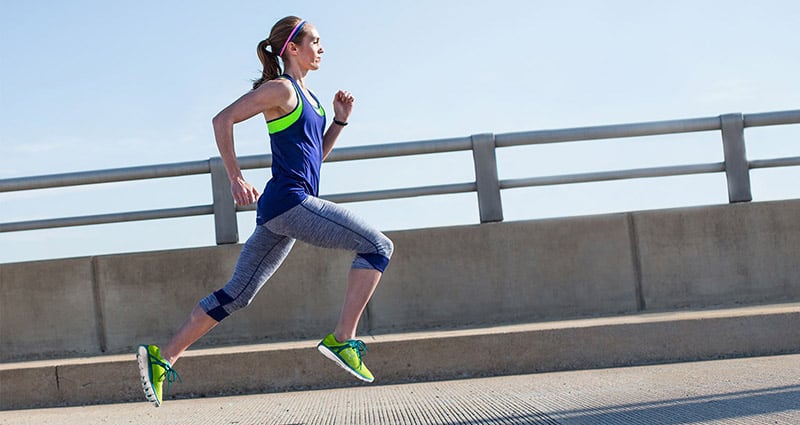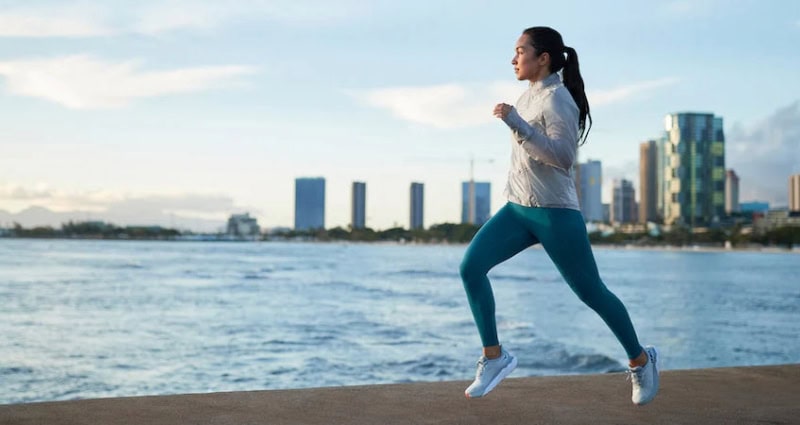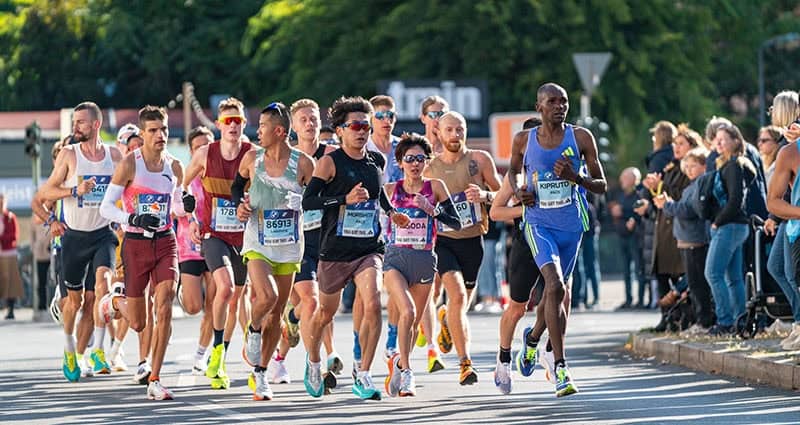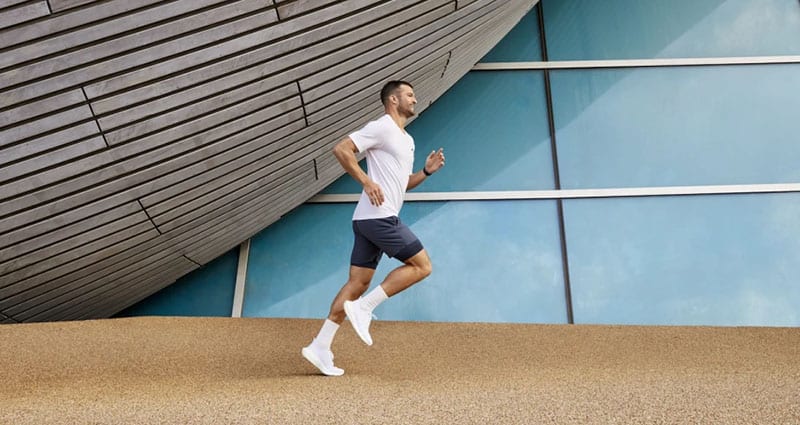Running form is often overlooked as a means to improve performance. We tend to obsess about the metabolic side of adaptation, such as increasing VO2 max and the lactate threshold. Yet improved running form leads to a better running economy and, therefore, faster running at the same effort.
“Proper running form results in a better running economy.”
Of course, running economy is more than just running with perfect form. Some factors, such as Achilles tendon length or dominant muscle fiber type, are inherited. Nonetheless, running form plays a major role in keeping your energy cost as low as possible.
Can You Improve Your Running Form?
There’s much debate about whether running form should be tinkered with. The idea is that running is a natural movement and shouldn’t be corrected. But this argument neglects the fact that we are no longer hunter-gatherers who grew up walking and running barefoot. We were raised wearing shoes and walking around man-made surfaces. Those outside influences dramatically affect our running gait, and it shows.
We can also consciously control movement to a higher degree than animals—for better or worse. Although much of running is controlled autonomously by the spinal cord, our brain significantly impacts our running. It is an opportunity to retrain our running gait for a more efficient, faster, and less injury-prone form.
That doesn’t mean we are doomed to think continuously about our form while running. But it’s worthwhile to do so initially until better movement patterns have been ingrained. Some changes are rather quick fixes, like correcting your arm swing. Other aspects of running form may take weeks until a lasting change occurs. For example, think of the complexity of a correct foot strike, which is influenced by hip flexibility, cadence, and motor control.
Body Position
Good running form starts with an optimally aligned body position. You may have heard of the kinetic chain, which is how the different parts of your body connect, from the cervical spine down to your ankles and feet. A problem upstream (e.g., tight hip flexors) can interfere with a proper foot strike. That means the cause of inefficient running or an injury is often found elsewhere, not where the problem reveals itself.
The best cue is to ‘run tall’, echoed in countless magazine articles and running books. An upright posture with your ears above your shoulders and a gaze ahead for 15 – 20 feet is how you set yourself up for ideal breathing and sound movement mechanics further down the kinetic chain. If you slouch, you disrupt optimal movement, and the resulting compensation almost always leads to problems at some point.
The other important cue regarding body position is to ‘lean forward from the ankles.’ If you lean forward from the hip, you essentially shut down your powerful glute muscles and burden your lower back and legs unnecessarily. Many runners struggle with proper hip alignment because their hip flexors are shortened from too much time in their office chairs. For that reason, I recommend some stretching after the warm-up.
Footstrike
The ideal way to strike the ground is midfoot or forefoot because heel-striking results in a higher braking force, reduced elastic energy storage, and a prolonged ground contact time (GCT). The antidote to striking with the heel first is a properly aligned hip. Your foot then naturally lands under your center of gravity, making overstriding—and hence heel-striking—almost impossible. Zero-drop and low-drop shoes (less than 5mm between heel and forefoot height) also benefit from a proper foot strike.
The initial contact should occur on the outside edge of the foot and then pronate to load the arch. Also, make sure your heel settles back to load the Achilles tendon. The arch and Achilles tendon then store and release elastic energy, taking advantage of the stretch-shortening cycle. While a short ground contact time is beneficial, this should result from transferring force faster and not getting quick with the foot. Stay too short or too long on your foot, and you’ve missed free energy.
After the arch and Achilles tendon’s initial loading phase, the center of pressure moves forward toward the big toe. But unlike some coaches suggest, try not to get extra propulsion by consciously pushing off the toes. Now, think of your foot as being along for the ride.
Hip Extension
The power of your stride comes primarily from the hips, not from pushing off your toes. The glutes are the largest muscles in our body for a reason. Unfortunately, many runners fail to engage their glutes properly, a condition called glute amnesia. If that applies to you, I recommend mobility work and running-specific compound exercises to fix this issue.
Coming off the ground, you must optimize your stride’s vertical and horizontal components. If your angle is too horizontal, you flatten your stride, and if your angle is too vertical, you have unnecessary airtime bouncing upwards. Both result in a shorter stride and wasted energy. A great analogy is how to get the greatest distance by firing a cannonball.
The recovery phase of your running gait starts once the hip has extended. But instead of actively moving your leg forward, let the stretch-shortening mechanism do the work for you. The same holds for folding up your lower leg. It is a passive motion that happens automatically. Don’t waste any energy by pulling your heels toward your buttocks.
Arm Swing
The upper and lower body interact in a coordinated fashion while running. Therefore, it is important to control the rhythm of the arm swing. It counterbalances rotation forces and dictates the running cadence to some extent. Often, the best way to ‘pick up’ fatigued legs is a compact arm swing.
The arm swing comes from the shoulders without shoulder sway or crossing the arms sideways past the midline of your chest. It is initiated by pushing your elbow backward and letting it fall forward passively. The angle at your elbow should be at 60 – 80 degrees. A longer lever above 90 degrees will require significantly more effort. Your hands stay relaxed, and connecting your thumbs and index fingers may be helpful.
I occasionally see runners holding a small bottle in their hands while running. While it seems sensible to bring some water along, it throws running mechanics out of balance. You don’t need to rehydrate unless you run in the tropics or are out for a monster long run.
Final Thoughts on Running Form
Although we have examined the different aspects of running form in separation, the body works as a whole. That’s also why running drills have a limited impact on running form. Take butt kicks as an example. During the drill, the hamstring actively pulls the lower leg towards your glutes. But during running, this movement is initiated passively by the stretch-shortening cycle. Therefore, it’s good practice to transition the drill into a short, relaxed sprint.
There’s ample evidence that regular strides faster than 1500m pace leads to a better running economy. Few of us have learned proper sprint mechanics, holding many of us back from reaching our potential in distance running. While sprinting and distance running technique are not precisely the same, anyone trained to run fast over short distances moves gracefully over long distances as well. Do 3 – 5 accelerations over 100m twice a week after easy runs, and watch your stride length and cadence improve at all training paces.
Lastly, don’t discount the ability to learn by imitation. Watch world-class runners on YouTube for a few minutes every day, and you’ll soon find that you’ll start to mimic their movement patterns. I learned this in Thailand by coaching Muay Thai classes to beginners of different nationalities. The Thais had an impressive skill for the rhythm, timing, and movement to pull off the punches and kicks even though they’d never done it before. But they have been watching their national sport on TV at family gatherings since childhood.




